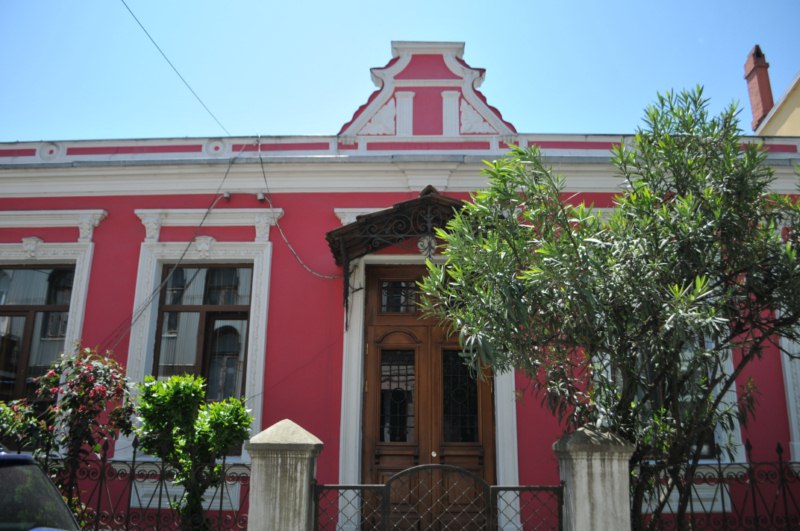

Batumi, Khulos Street No. 17
Brief description of the monument:
This single-story building, likely constructed at the end of the 19th century, has a fascinating history. It was originally the family home of Memed Abashidze, who was arrested here in 1918 when he protested against the Turkish forces that entered Adjara. After the arrest, the building was used as a militia station for some time, but it was soon sold to a Jewish woman, Ekaterine Keigelios. In 1941, six Jewish individuals were housed there, and as a result, Ekaterine was forced to sell the house. It was later acquired by the Bakuridze family.
The building stands on a high basement, and its façade is painted pink, with the moldings, sandricks, and parapet painted white. The walls are divided by rectangular window openings. The entrance is slightly to the left of the center of the façade and is topped with a decorative metal canopy. The window openings are framed with profiled rectangular moldings, each adorned with a vegetal ornamentation. In the center of each opening is a decorative keystone with a plant motif. Above the windows, there are decorative sandricks supported by ornate corbels.
The house is topped with a profiled cornice, which is finished with a parapet. The parapet above the entrance is slightly slanted and decorated with vegetal motifs and fluted pilasters.
Between the house and the street is a small garden. The house is not only significant for its rich history but also for its artistic and architectural value, playing an important role in the urban development of the street.